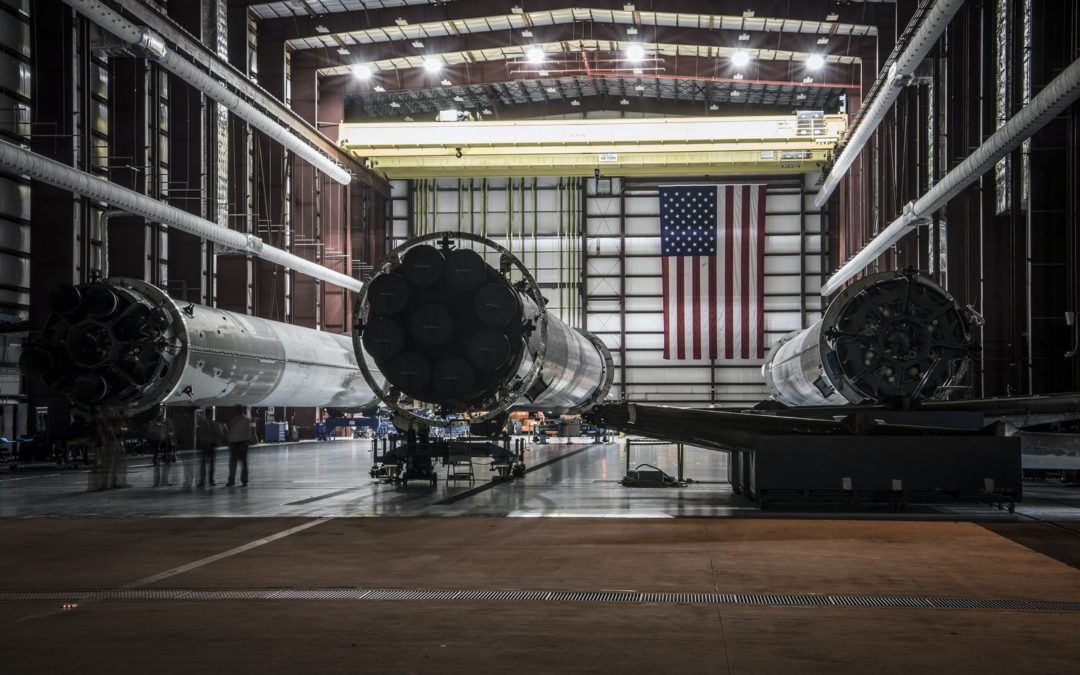Pressurized cleanrooms are used in a range of industries and applications. Varying levels of pressure determines the way air naturally moves in a space. High and low pressure, or positive and negative pressure, can be used as a tool in cleanroom environments to protect against entering contaminants (in positive pressure cleanrooms) or contaminant leakage (in negative pressure cleanrooms).
We’re going to focus on positive pressure cleanrooms, how they work, and the benefits they offer to aerospace and defense cleanrooms.
What are Positive Pressure Cleanrooms?
Positive pressure cleanrooms have greater air pressure in the cleanroom than the outside environment. In a positive pressure cleanroom, clean, filtered air is consistently pumped into the room through the HEPA filtration and cleanroom HVAC system. In the event that a door or window was opened in the cleanroom, air would rush out into the outside environment.
This positive pressure ensures that in the event of a breach or leak in the cleanroom, the products and processes within the cleanroom are protected. Because the cleanroom has positive pressure, the air is forced out of the cleanroom, preventing contaminated or unfiltered air from seeping in.
Positive pressure cleanrooms are most commonly used in applications where the cleanliness of the air within the cleanroom is more important than the air quality outside the cleanrooms. For highly technical applications like microelectronics, aerospace, and defense, where the tiniest particle can damage the quality of the manufactured product, a positive pressure cleanroom affords a number of benefits.
3 Benefits of Positive Pressure Cleanrooms for Aerospace and Defense Industries
Positive pressure cleanrooms are beneficial to a wide range of applications. For microelectronics, they afford the cleanliness standard required to minimize damages to electronic components like microchips. For hospital and healthcare applications, positive pressure cleanrooms provide the controlled environment healthcare professionals need to keep patients safe.
But outside these common applications, positive pressure cleanrooms also provide a wealth of benefits for other industries. Let’s look at three benefits of positive pressure cleanrooms for aerospace and defense industries:
#1 Maintain Cleanroom Classification
One of the key benefits of a positive pressure cleanroom for aerospace and defense industries is the cleanroom’s ability to maintain its classification. Because clean, filtered air is constantly being pumped into the cleanroom, it’s very difficult for contaminants or particles to enter. Particles must work against the flow of air to enter a positive pressure cleanroom, which helps to keep your cleanroom at its required classification. This ensures your cleanroom is able to regulate itself with ease, with minimal maintenance or upkeep from your staff.
#2 Keep Out Debris and Particles
For aerospace and defense cleanroom applications, debris and particulate can be exceptionally damaging. When you’re working to manufacture sensitive products like microchips, defense products, aircraft, or even spacecraft, the smallest particle can affect the quality of the manufactured product.
Positive pressure cleanrooms work to assist aerospace and defense applications by making it very difficult for debris and particles to enter the cleanroom. Even when an employee is entering a cleanroom or opening a pass-through, the positive pressure of the cleanroom forces the excess air in the room out, minimizing the potential for contaminated air or particulate to enter the cleanroom. This is particularly useful in research and manufacturing applications where a highly controlled environment is key to the success of the project or process.
#3 Protect Sensitive Work
Many aerospace and defense applications deal with sensitive electronics and sensors and navigation system calibration. This type of work requires a well-controlled environment. Even the smallest particle can disrupt sensitive navigation systems or compromise the quality of a sensor or microchip.
For aerospace and defense applications like this, a positive pressure cleanroom provides the necessary level of protection from contaminants. A positive pressure cleanroom is first developed to meet the application’s classification standards, and provides an extra level of protection thanks to the nature of positive pressure.
In addition to meeting cleanroom classifications, the positive pressure cleanroom makes it much more difficult for debris and particulate to enter the cleanroom, protecting even the most sensitive aerospace and defense research, calibration, and manufacturing processes.
Positive Pressure Cleanrooms Benefit a Variety of Aerospace and Defense Applications
Positive pressure cleanrooms are the ideal choice for a variety of aerospace and defense applications. From electronics and microchip manufacturing to aircraft and spacecraft production to navigation system calibration, there are a number of processes that can benefit from the extremely controlled environment a positive pressure cleanroom provides.
Is a positive pressure cleanroom right for your application? Let the Angstrom Technology team know. We design, manufacture, and install cleanrooms for custom applications in the aerospace and defense industry and beyond. If you’re looking for a cleanroom that fits your unique application and cleanroom classification, we can help. Give us a call at 888-768-6900 or contact us online today for more information.



